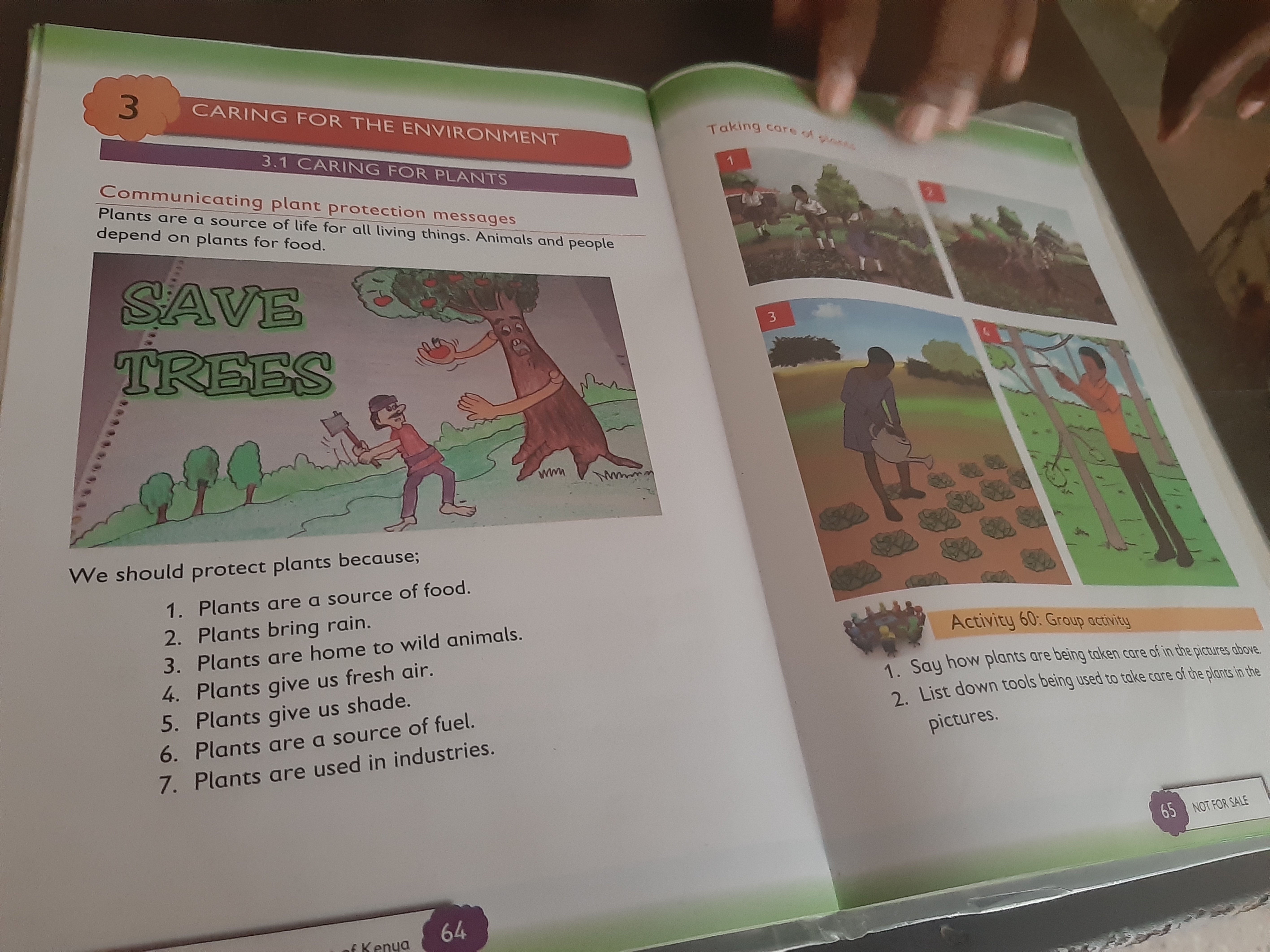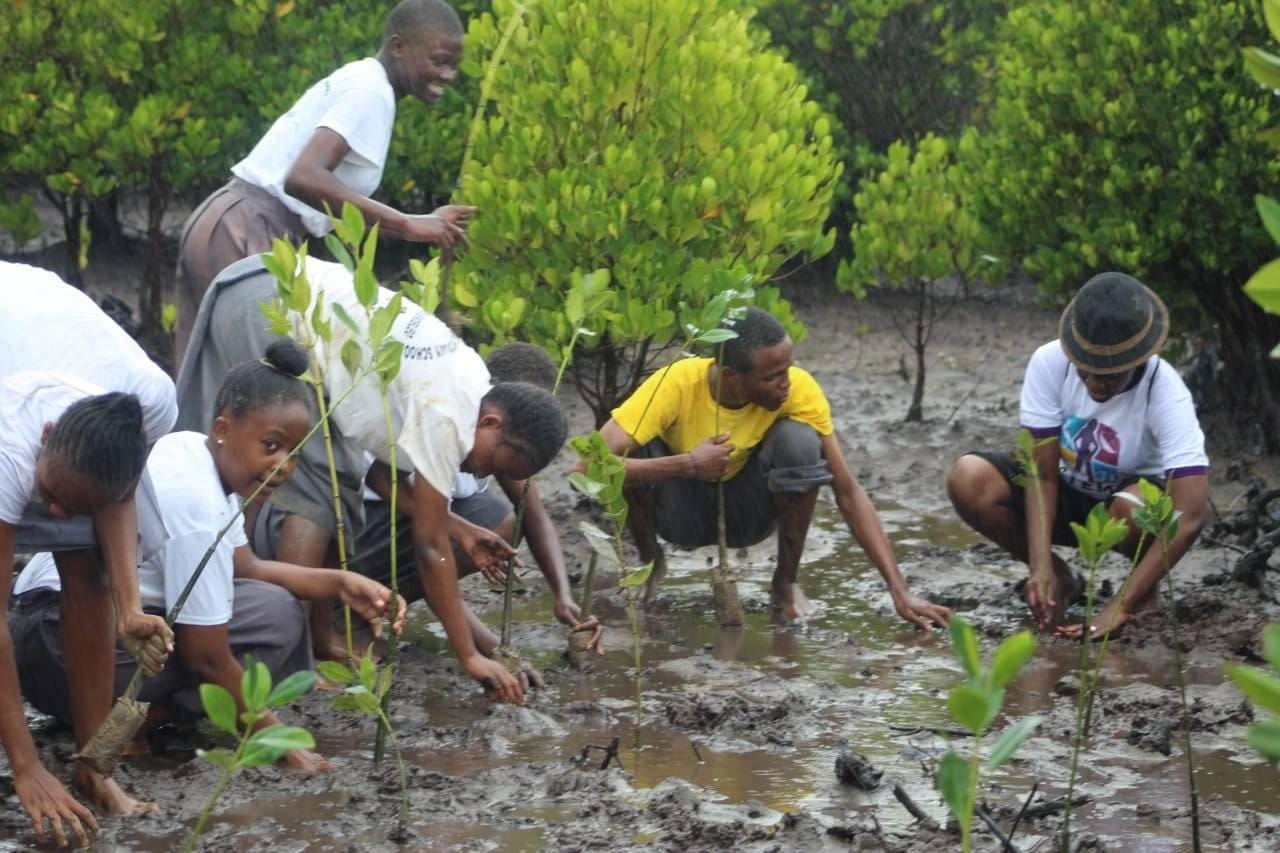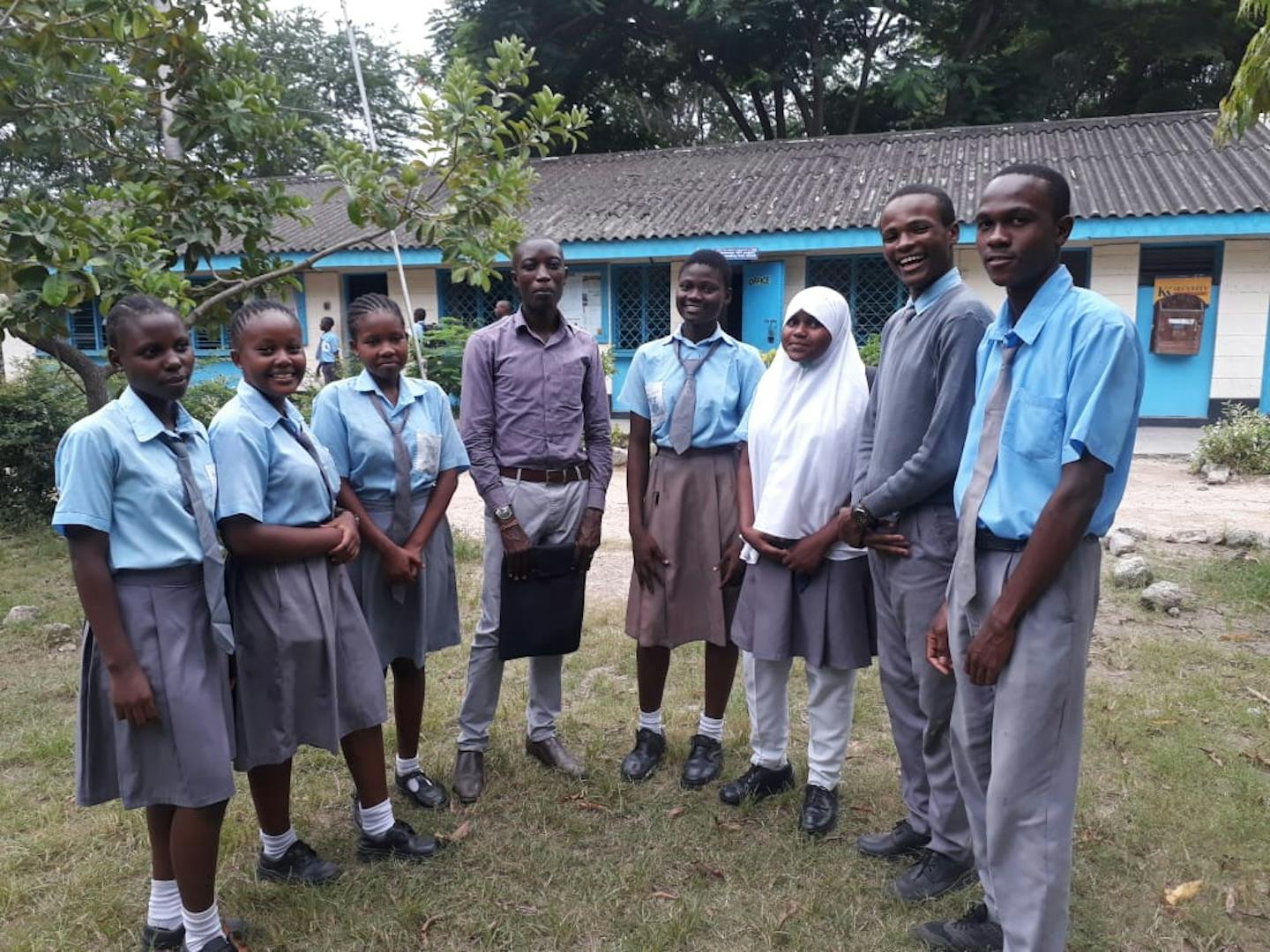Can Kenya’s new education system address climate change?
- Nature Conservation
- Ecosystem Restoration
- Mangroves
- Youth Leadership
- Education & Culture
- Sub-Saharan Afrotropics
- Afrotropics Realm
In June 2019, photos of third grade students cleaning their local market went viral in Kenya. The students were from Kwanthambi Backstreet Preparatory Primary school in Meru, and their actions that day are now being replicated in schools across the country.
The viral photos were posted just a few months after the federal Government approved a new education system. The Curriculum-Based Competency (CBC) replaced the old 8.4.4 system. The change was in line with the ‘demands of activists', who claimed that graduates weren't acquiring enough problem solving skills. Instead, they argued, students were too focused on theory.
But for many Kenyans who went through the old system, some of these new activities remind them of a more traditional punishment for indiscipline.

Pupils from Jaribuni primary school in Kilifi Kenya outside their classroom.
Janet Murikira
These activities are now part of the learning and assessment of a new subject dubbed ‘Environment activities’ introduced in the new curriculum according to Mary Nyambura, a Grade one teacher at Kisauni primary school in Mombasa.
“Students are graded based on how best they executed the practical activities in a certain subject. For example, Environment Activities students in Grade 1 have activities such as planting trees and watering them both at home and at school. For their homework parents are required to take photos of their sons and daughters undertaking the activities and send them to the school database.” Mary says.
The subject is compulsory for every Grade One to Grade Three pupil.
A spot check by the reporter on an ‘Environment activities’ Grade 1 book reveals the book is divided into topics like caring for plants, caring for the soil and renewable energy. This narrows down to basic climate change education.
Environmental activists, such as Bosco Juma, feel that Environmental Education has been long ignored as a tool to help in combating climate change in Kenya. Bosco works with students to drive knowledge on climate change.
“The term ‘Climate Change’ is very common. I am sure most people have experienced the effects of climate change but they are unable to link human activities to climate change.”

A page showing a topic on conserving trees in a Grade one 'Environment activities' text book used by students in Kisauni primary school.
Janet Murikira
This, Bosco believes, “is because climate change education has not been broken down in a way that the ordinary person can understand. Not just in Kenya but most African countries. And that’s why most African countries are always at crossroads on at what level they should introduce climate change education”.
As a result, Associate Professor Julius Huho, from Karatina University, has found that close to three quarters of Kenyan university students are unaware of global responses to climate change. This is despite all of the students he has studied admitting to having experienced climate change fuelled phenomena, such as increased temperatures and erratic rainfall patterns.
In his research, Dr Huho recommended a “review of the curricula in Kenya’s education systems”, specifically stating that “climate-related courses should be made compulsory, either as a common course or as a topic that runs throughout."
Dr Huho’s study further indicated that 60.5% of the students he sampled were unaware of Kenya's national climate action plan.
But as Kenyan students ignore Kenya’s national climate action plan, the plan has equally ignored them.
A close look at the current plan does not indicate how it intends to work with the education system. Neither does the previous national action plan which was phased out in 2017.
Months into implementation, the new curriculum has already started facing challenges. The majority of the challenges have been blamed on the increasing gap between the rich and the poor.
“Parents and teachers are still trying to adapt to the new system. For example for assignments where parents are required to send photos of their children undertaking some activities; if a parent does not own a smartphone, that parent will not cooperate. Not because they are defiant, but because they are not in a position to” teacher Mary Nyambura says.
However, the new education curriculum has left activists like Juma optimistic that Kenya can produce graduates with a deeper understanding of climate change.

The students from Changamwe high school, Mombasa participate in mangrove replanting exercise at a site ran by Juma's Bigship organization.
Bosco Juma
“Practical activities invoke interest as opposed to theoretical teaching. If the activities are executed in the right way, they will create a solid foundation for young students to link climate change to the happenings in their day to day lives” Juma adds.
Late last year, a landslide in northwestern Kenya claimed 52 lives months after hunger claimed two lives in the same region.
And as the world battles the COVID-19 pandemic, Kenya has been forced to battle two problems: COVID-19 and the invasion of millions of desert locusts which have continued to eat away thousands of hectares of food crops since January.
According to the United Nations Environment Program, abnormal rainfall experienced in the region over the past six months has accelerated the hatching of the destructive pests.
As Kenyan students begin to grow their understanding of how climate change affects their day to day lives, they will have to contend with how to prevent and adapt to these changing conditions in the future.



